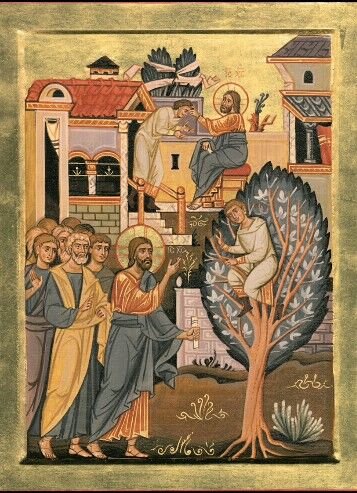Jesus entered Jericho and was passing through. A man was there by the name of Zacchaeus; he was a chief tax collector and was wealthy. He wanted to see who Jesus was, but because he was short he could not see over the crowd. So he ran ahead and climbed a sycamore-fig tree to see him, since Jesus was coming that way. When Jesus reached the spot, he looked up and said to him, “Zacchaeus, come down immediately. I must stay at your house today.” So he came down at once and welcomed him gladly. All the people saw this and began to mutter, “He has gone to be the guest of a sinner.” But Zacchaeus stood up and said to the Lord, “Look, Lord! Here and now I give half of my possessions to the poor, and if I have cheated anybody out of anything, I will pay back four times the amount.” Jesus said to him, “Today salvation has come to this house, because this man, too, is a son of Abraham. For the Son of Man came to seek and to save the lost.” (Luke 19: 1-10 NIV)
Together
Jesus was drawn to Zacchaeus for two reasons, it seems: because he was “a son of Abraham” and because it was Jesus’ mission “to seek and save the lost”. And he also wanted to stay at his house. My first reaction is to think it very forward of Jesus to invite himself in like this. Would I “welcome him gladly”? Why did Zacchaeus want to meet Jesus? Perhaps curiosity, perhaps expectation of some miraculous sign. In the end it appears that both men had their needs met. And what transformation this encounter brought to both Zacchaeus and the community he lived in!
Psychologists (1) say that the sharing of food is both a sign of intimacy and a way in which intimacy can be nurtured. There is a great deal of trust involved in accepting food from another. On the other hand, offering food is a sign of care for the other. The attractions to a group might be family ties of kinship (“a son of Abraham”), tribal identity or shared cultural values, as would be expected in cultural happenings such as sports events or concerts.
There are also more elementary pulls towards a group: work towards a common goal (e.g. in employment, companies and corporations) or the need for support during adversity or protection when threatened.
Groups with many shared values provide a sense of belonging and community feel. Conversely, purely opportunistic groups (like many social media groups) often have little community cohesion.
How can I be fully present in the community, contributing and receiving all that brings life?
True Community (Koinonia)
Full of the spirit of God
One another’s Love.
(spontaneous Haiku)
Questions:
What is drawing you to share your life with others?
Who would want to invite you into their house but needs your expressed permission to do so?
Stephan Helfer
(1) Gregersen, S. C., & Gillath, O. (2020). How food brings us together: The ties between attachment and food behaviors. Appetite, 151, 104654.

